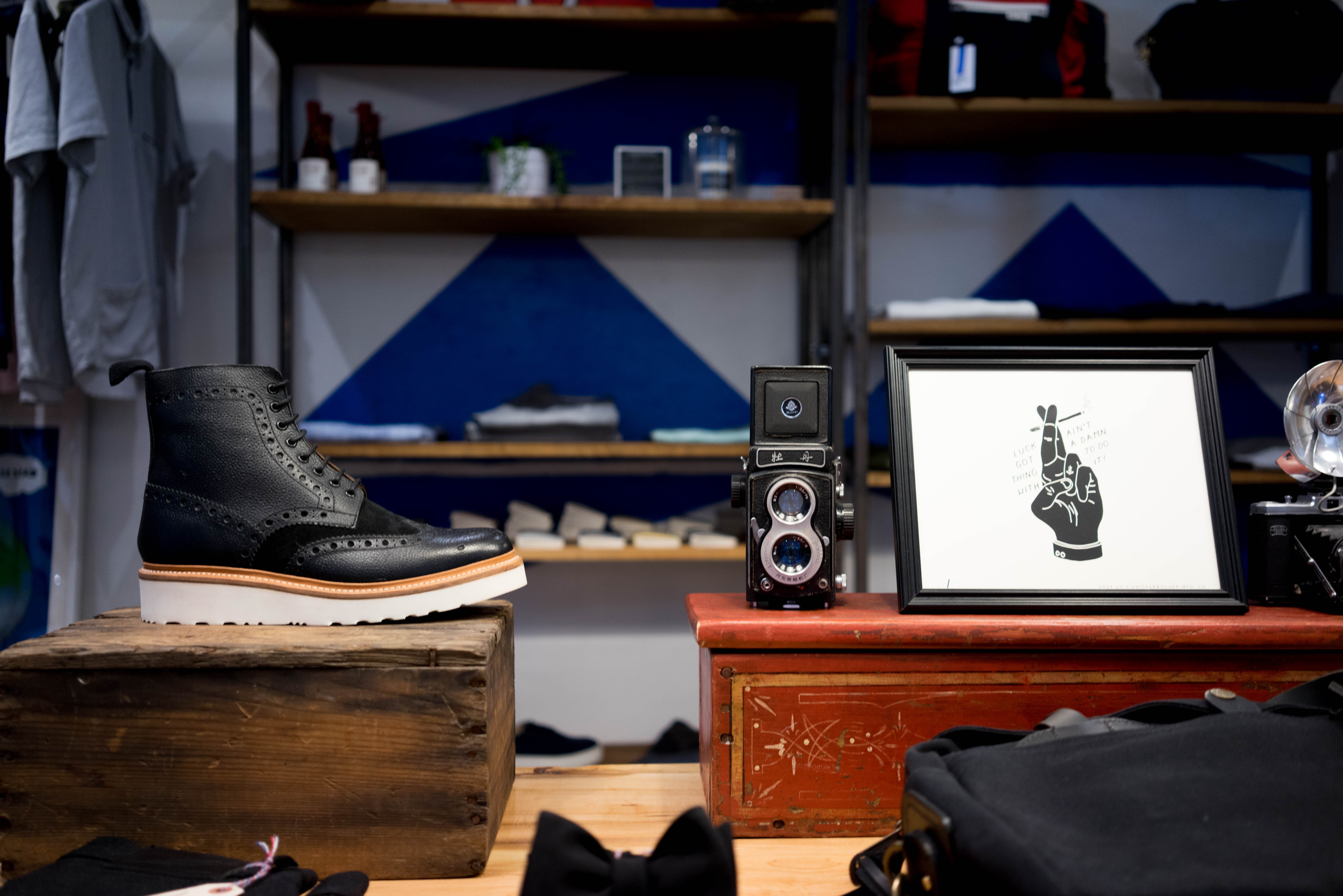Topics
February 07, 2018
Blockchain's Impact on the Apparel and Fashion Industry

Imagine the possibility of easily tracking a garment from the material that was used to make it, to its purchase in a store or on a website. Just think what it would mean if consumers could use their smartphones to scan a tag on a jacket, pants, shoes or any other article of clothing, and instantly read the authentic story of where and how it was made. Transparency and traceability could be designed into the production and distribution of apparel. Sustainability could be proven. Customers could choose what to buy with new confidence.
That’s the promise of blockchain, a concept that is already revolutionizing how business is done in supply chain and other sectors. Blockchain first started almost ten years ago, as the technology underpinning the digital currency of bitcoin. For the first few years, bitcoin got most of the publicity. Then enterprises began to see that blockchain could offer advantages that went far beyond a single digital currency.
What is Blockchain?
Blockchain is a digital ledger of records that is distributed over multiple computers. These records could be any fact, event, or transaction that you want noted. For example, a supplier and a manufacturer might use a digital ledger to record that the manufacturer purchased a specific batch of raw materials from the supplier. New records are bundled together in a block (that’s the block part). This block is linked back to the previous block, which is in turn linked back to the block before it, and so on (that’s the chain part). Each link between blocks is secure. To change any record after it has been inscribed in a block and chained back to the others would mean changing all the blocks that come after it. Because the ledger is replicated over different systems, each copy of the ledger would then need to be changed in the same way. This is practically impossible when many distributed systems are involved.
The combination of securely chaining blocks together and copying the ledger over multiple systems effectively makes blockchain records tamperproof. In addition, blockchains are decentralized. No single person or entity controls a blockchain. Depending on the type of blockchain technology being used, none of the participants in the blockchain need to trust each other either. The blockchain itself keeps everything “honest and above board”. This is one of the great strengths of blockchain when used for bitcoin. The millions of people making transactions with bitcoin do not know each other, but they are assured that their transactions will be properly recorded, and that cheating is not possible.

Apparel, Blockchain and Consumers – a New ABC for Better Business
Blockchain and apparel supply chains fit well together. A distributed, digital ledger can pull together the links in the supply chain, starting with farms or fiber providers, then processors, manufacturers, shippers and finally retailers. Instead of each participant tucking data away in its own system, which may still be paper-based and not electronic, the records are kept on a central, digital platform, which is copied for each participant. Instead of weeks needed to find the original source of a garment, for example, that information can be pulled in seconds from a blockchain system.
The advantages for the apparel and fashion industry are not limited to increased efficiency. Sustainability and compliance of an item can be tracked through information from the blockchain on the raw materials and manufacturing processes used to make it. Authenticity of a garment, especially important in the fashion industry, can be proven. Counterfeit goods can then be rooted out. Making blockchain information immediately available to consumers lets the apparel or fashion brand tell the story of an item’s origins far better than a simple “Made in…” label. In doing so, they also satisfy a demand for this detail by a market that is increasingly ecologically and ethically aware. On the other hand, blockchain does not force supply chain participants to give up commercially sensitive information. The system can be built so that competing suppliers are not obliged to disclose levels of discounts given to their customers, for example.
Practically Speaking, How Does a Fashion Company Start Using Blockchain?
The starting point is your business need. If you want to use blockchain for transparency and traceability, your blockchain application will need to be designed to gather the relevant information from the right partners. If you want to show shoppers information on the type of fabric used, where the raw materials were grown, and what chemicals were used in processing, you will also need to structure the information you gather to make it accessible to them, and so on.
Once you have clearly identified your needs and goals, decide on the levels of trust you will operate with. In the example of bitcoin, trust is assumed to be zero (this makes blockchain for bitcoin quite complex). However, this is not the only possibility. Next, pick an appropriate blockchain platform. There are many, such as Ethereum, Ripple, IOTA and Stellar to name a few, each with unique characteristics. Then, write your blockchain application and give it a suitable user interface that will make it easy for farmers, processors, manufacturers, shippers and retailers to use.
Clearly, there are several steps to get blockchain working for you. Blockchain application programming skills, coupled with an understanding of your business, will be important. Likewise, integration with existing systems should be considered. Enterprise resource planning (ERP) systems are often the digital backbone of companies in a supply chain. A flexible ERP system will make it easier for you to automatically send the blockchain information. This could include information such as supplier identities and batch numbers of material used, corresponding finished product identification, and shipping dates and destinations.
Using Blockchain in the Apparel and Fashion Industry Today
Early adopters have already started using blockchain to better and more responsibly manage their apparel supply chains. Examples include the supply chain data company Provenance and alpaca apparel creator Martine Jarlgaard teaming up to put a blockchain application in place. The Provenance application registered raw material on the blockchain from alpaca shearing on the farm, through spinning, knitting and final apparel creation in Martine Jarlgaard’s London studio. A garment smart label then gave a unique ID for shoppers to consult, with location mapping, content and timestamps from each step of the production.
Using blockchain also allows consumers to see and understand the complexity in bringing a product to market. This can help alter their perception of value and reduce the huge quantity of products currently thrown out within one year of being purchased. Instead of limiting itself to disposable items and focusing only on cutting prices and corners, the apparel and fashion industry can put more emphasis on quality and sustainability, while maintaining levels of margins and revenues.


